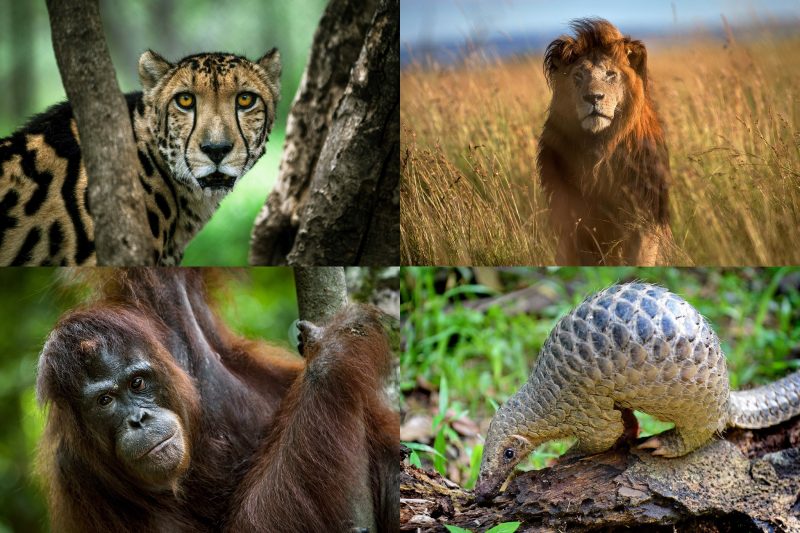
By Tatiana Schlossberg for The New York Times July 11, 2017
From the common barn swallow to the exotic giraffe, thousands of animal species are in precipitous decline, a sign that an irreversible era of mass extinction is underway, new research finds.
The study, published Monday in the Proceedings of the National Academy of Sciences, calls the current decline in animal populations a “global epidemic” and part of the “ongoing sixth mass extinction” caused in large measure by human destruction of animal habitats. The previous five extinctions were caused by natural phenomena.
Gerardo Ceballos, a researcher at the Universidad Nacional Autónoma de México in Mexico City, acknowledged that the study is written in unusually alarming tones for an academic research paper. “It wouldn’t be ethical right now not to speak in this strong language to call attention to the severity of the problem,” he said.
Dr. Ceballos emphasized that he and his co-authors, Paul R. Ehrlich and Rodolfo Dirzo, both professors at Stanford University, are not alarmists, but are using scientific data to back up their assertions that significant population decline and possible mass extinction of species all over the world may be imminent, and that both have been underestimated by many other scientists.
The study’s authors looked at reductions in a species’ range — a result of factors like habitat degradation, pollution and climate change, among others — and extrapolated from that how many populations have been lost or are in decline, a method that they said is used by the International Union for Conservation of Nature.
They found that about 30 percent of all land vertebrates — mammals, birds, reptiles and amphibians — are experiencing declines and local population losses. In most parts of the world, mammal populations are losing 70 percent of their members because of habitat loss.
In particular, they cite cheetahs, which have declined to around 7,000 members; Borneo and Sumatran orangutans, of which fewer than 5,000 remain; populations of African lions, which have declined by 43 percent since 1993; pangolins, which have been “decimated”; and giraffes, whose four species now number under 100,000 members.
The study defines populations as the number of individuals in a given species in a 10,000-square-kilometer unit of habitat, known as a quadrat.
Jonathan Losos, a biology professor at Harvard, said that he was not aware of other papers that have used this method, but that it was “a reasonable first pass” at estimating the extent of species decline and population loss.
Dr. Losos also noted that giving precise estimates of wildlife populations was difficult, in part because scientists do not always agree on what defines a population, which makes the question inherently subjective.
Despite those issues, Dr. Losos said, “I think it’s a very important and troubling paper that documents that the problems we have with biodiversity are much greater than commonly thought.”
The authors of the paper suggest that previous estimates of global extinction rates have been too low, in part because scientists have been too focused on complete extinction of a species. Two vertebrate species are estimated to go extinct every year, which the authors wrote “does not generate enough public concern,” and lends the impression that many species are not severely threatened, or that mass extinction is a distant catastrophe.
Conservatively, scientists estimate that 200 species have gone extinct in the past 100 years; the “normal” extinction rate over the past two million years has been that two species go extinct every 100 years because of evolutionary and other factors.
Rather than extinctions, the paper looks at how populations are doing: the disappearance of entire populations, and the decrease of the number of individuals within a population. Over all, they found this phenomenon is occurring globally, but that tropical regions, which have the greatest biodiversity, are experiencing the greatest loss in numbers, and that temperate regions are seeing higher proportions of population loss. Dr. Ehrlich, who rose to prominence in the 1960s after he wrote “The Population Bomb,” a book that predicted the imminent collapse of humanity because of overpopulation, said he saw a similar phenomenon in the animal world as a result of human activity.
“There is only one overall solution, and that is to reduce the scale of the human enterprise,” he said. “Population growth and increasing consumption among the rich is driving it.”
He and Dr. Ceballos said that habitat destruction — deforestation for agriculture, for example — and pollution were the primary culprits, but that climate change exacerbates both problems. Accelerating deforestation and rising carbon pollution are likely to make climate change worse, which could have disastrous consequences for the ability of many species to survive on earth.
Dr. Ceballos struck a slightly more hopeful tone, adding that some species have been able to rebound when some of these pressures are taken away.
Dr. Ehrlich, however, continued to sound the alarm. “We’re toxifying the entire planet,” he said.
When asked about the clear advocacy position the paper has taken, a rarity in scientific literature, he said, “Scientists don’t give up their responsibility as citizens to say what they think about the data that they’re gathering.”